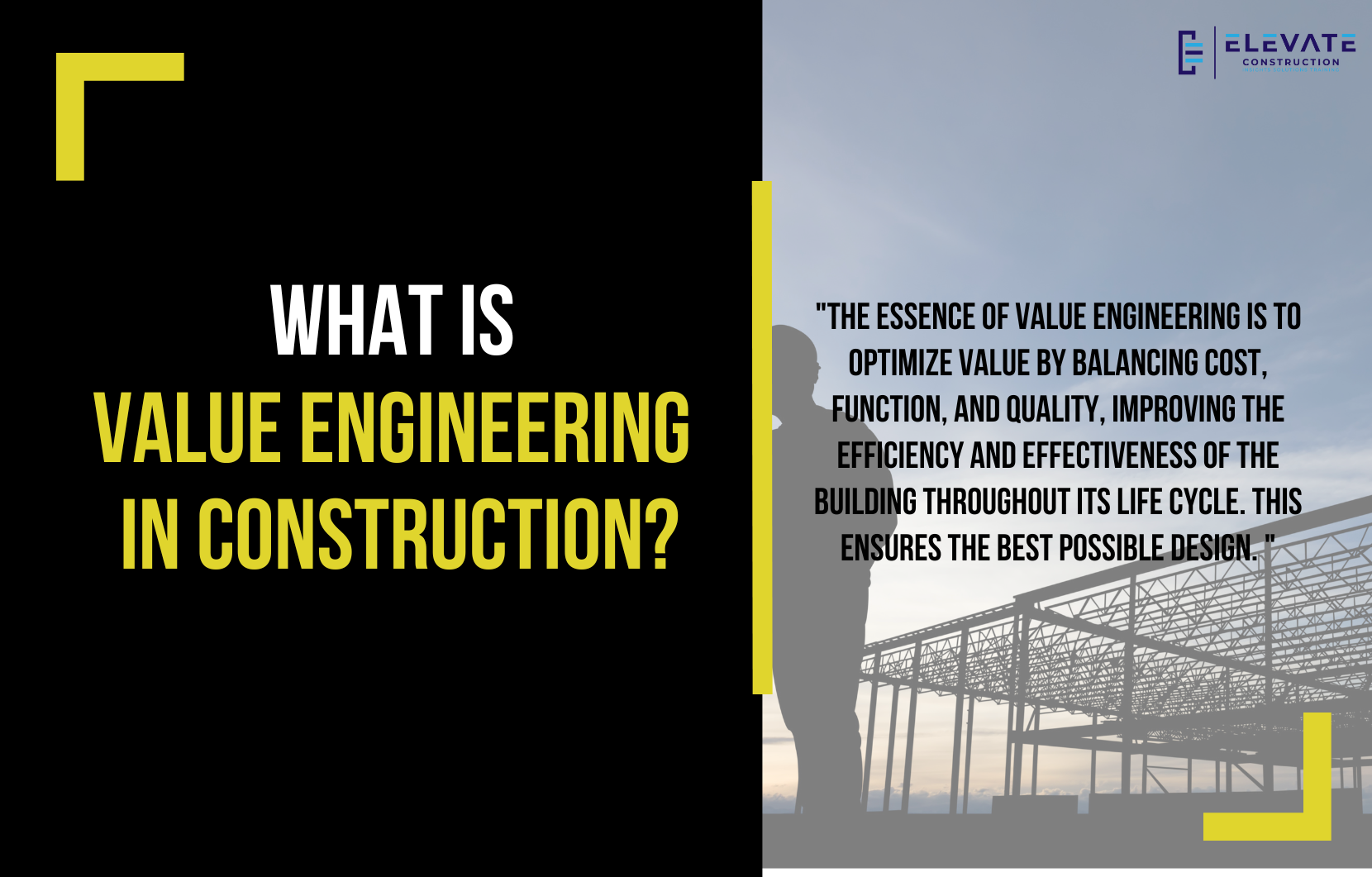Welcome to our blog on value engineering in construction! Today, we’ll dive deep into what value engineering truly is, what it isn’t, and how it can be effectively controlled to achieve the desired outcome. If you’re interested in understanding what value engineering should be, what it definitely cannot become, and how to steer it towards the right outcome, you’ve come to the right place.
What is Value Engineering in Construction?
Let’s start by defining value engineering. In construction, value engineering is a systematic, organized approach aimed at optimizing the value of a project by balancing cost, function, and quality. This involves analyzing project functions, identifying value-add cost-effective alternatives, and implementing innovative solutions designed to help the project meet its budget targets while maintaining essential features. The purpose of value engineering is to involve all stakeholders and disciplines in problem-solving to design a project that lowers the overall total cost but still maintains good quality and supports the project’s life cycle.
Value engineering’s true intent is to eliminate waste and any design elements outside the project’s parameters or performance criteria, ultimately making the project valuable or profitable for the owner. However, it is not meant to be a tool for general contractors to simply cut out crucial design elements to meet budget constraints.
The Key Points of Value Engineering
The essence of value engineering is to optimize value by balancing cost, function, and quality, improving the efficiency and effectiveness of the building throughout its life cycle. This ensures the best possible design. However, there’s a common problem: many people have a negative impression of value engineering, and often, they have good reason.
How General Contractors Usually Make Proposals for Projects
Here’s a typical scenario: when general contractors propose on a project, they create a CPM schedule, which is a target or predictive schedule based on what the owner wants. However, this schedule often lacks good logic, trade flow, and realistic production simulation, leading to an undercut project timeline.
For example, in the proposal phase, the owner might be promised a 20-month project timeline. During concept design, the timeline still appears to be 20 months, and this continues into schematic design and design development. However, halfway through, the contractor realizes the project will actually take 24 months. This realization comes too late, leading to significant cost increases and project delays.
Effects of Choosing the Lowest Bid Contractor
Often, the winning contractor is the lowest bidder, which incentivizes them to spend the least amount of time and resources on the project. This approach rarely results in the lowest overall project cost. As the project progresses, additional features and systems are added, and the initial 20-month estimate turns out to be unrealistic.
What Happens When Value Engineering is Done Wrong
When it becomes clear that the project will actually take 24 months, costs skyrocket. For example, extending the project by four months can add significant costs in general conditions, general requirements, insurance, and delayed occupancy, potentially turning a $3 million problem into a $6 million one. This mismanagement leads to one of two outcomes: making the owner and designers unhappy by cutting crucial design elements or overburdening workers, resulting in a project that finishes even later than planned.
Better Way to Do Value Engineering in Construction
To avoid these pitfalls, a better approach to value engineering is to use a tech production system early in the design phases. This ensures an accurate understanding of the project’s timeline and costs from the beginning, allowing for a design that stays within budget and meets quality and function requirements. True value engineering should always be about balancing value, cost, quality, and function from the start, not cutting off essential features later on.
We hope you found this blog on value engineering informative. Stay tuned for more insights and practical tips in our upcoming posts!
If you want to learn more we have:
-Takt Virtual Training: (Click here)
-Check out our Youtube channel for more info: (Click here)
-Listen to the Elevate Construction podcast: (Click here)
-Check out our training programs and certifications: (Click here)
-The Takt Book: (Click here)
Discover Jason’s Expertise:
Meet Jason Schroeder, the driving force behind Elevate Construction IST. As the company’s owner and principal consultant, he’s dedicated to taking construction to new heights. With a wealth of industry experience, he’s crafted the Field Engineer Boot Camp and Superintendent Boot Camp – intensive training programs engineered to cultivate top-tier leaders capable of steering their teams towards success. Jason’s vision? To expand his training initiatives across the nation, empowering construction firms to soar to unprecedented levels of excellence.
On we go!








